Regretting My Juniper Planting Location: Time To Transplant
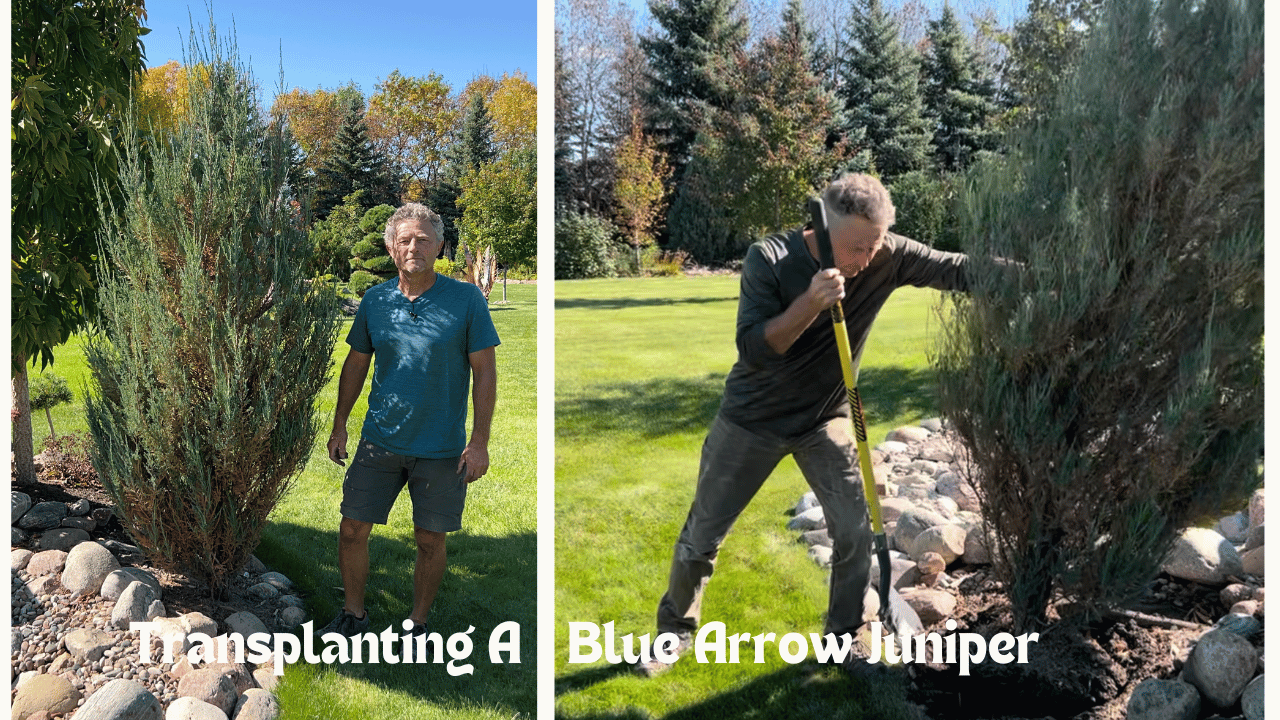
I recently transplanted a Blue Arrow Juniper to a new location since I originally planted it too close to a Buckeye Tree. You can watch the entire process in the video below. But first, let's do a quick summary of the most critical steps you should take when moving an established plant to a new location.
Here are the most critical steps to consider when transplanting a small tree:
- Choose the right time of year
- Water thoroughly before moving
- Sever all roots before lifting the root ball out of the ground
- Keep as much of the rootball intact as possible
- Avoid direct sun on the rootball when preparing to re-plant
- Select the proper new location according to the plant's requirements
- Backfill with good soil, add fertilizer and water thoroughly
- Add supports and mulch
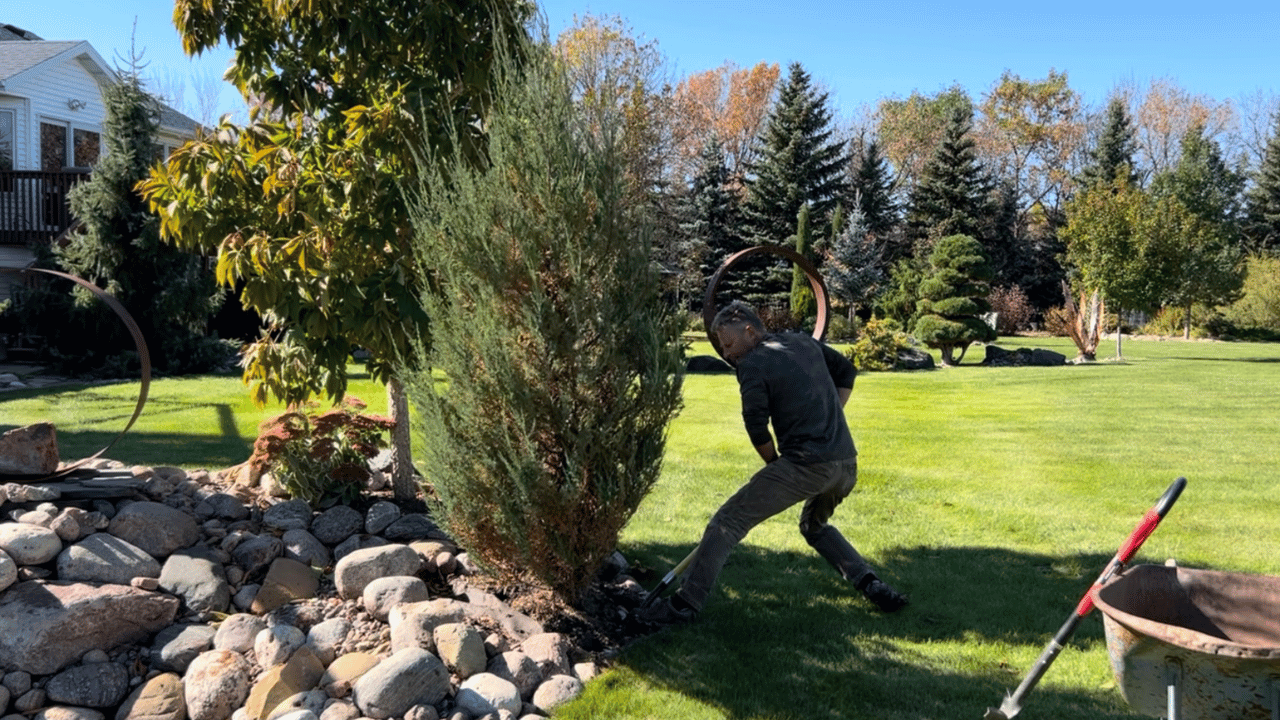
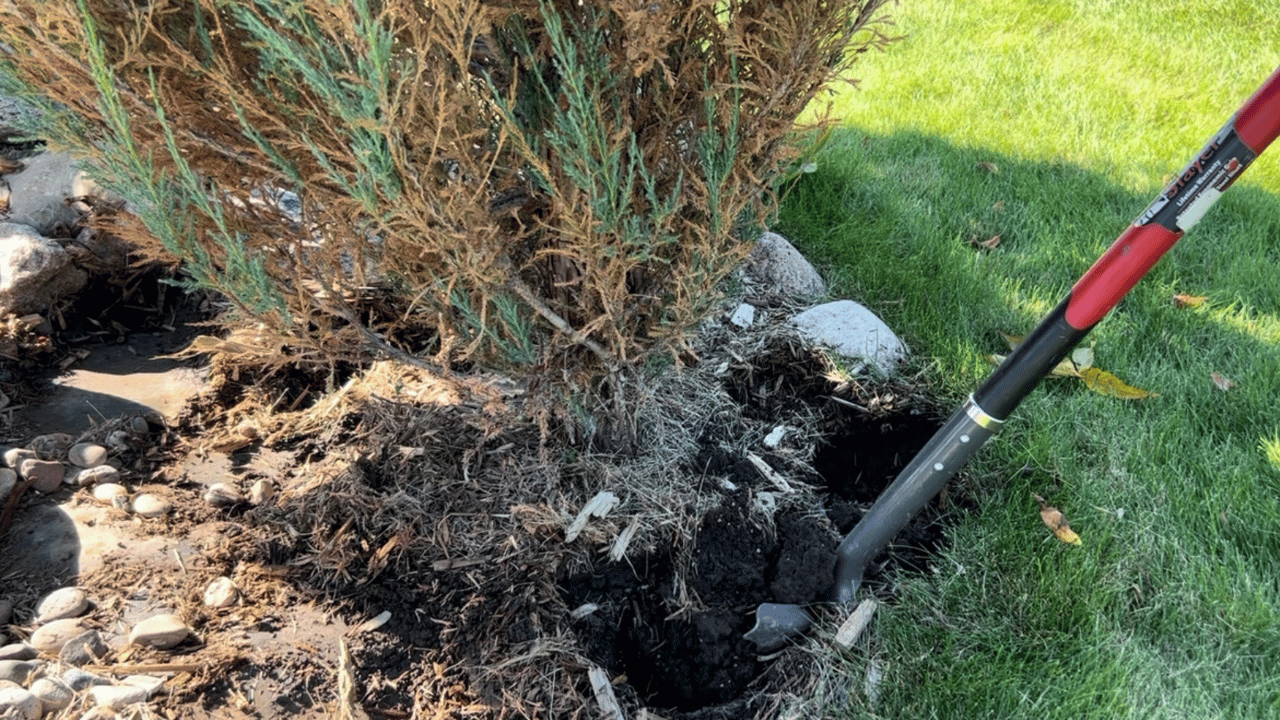
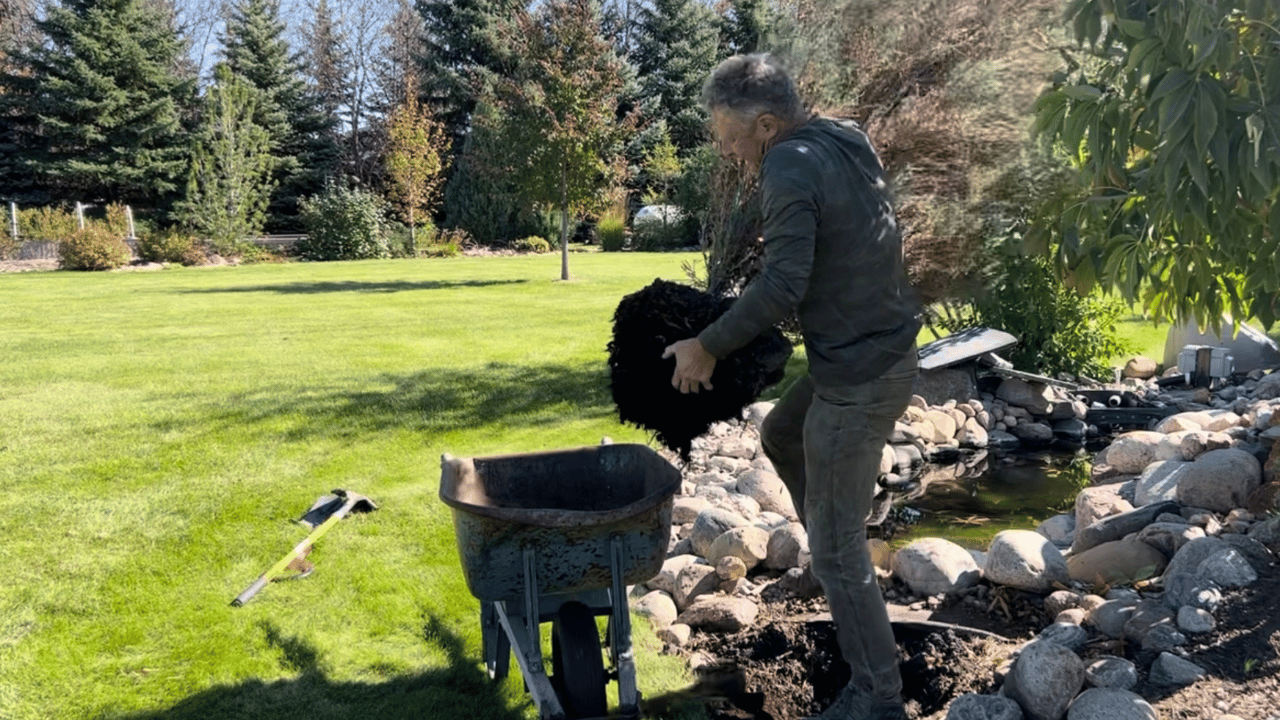
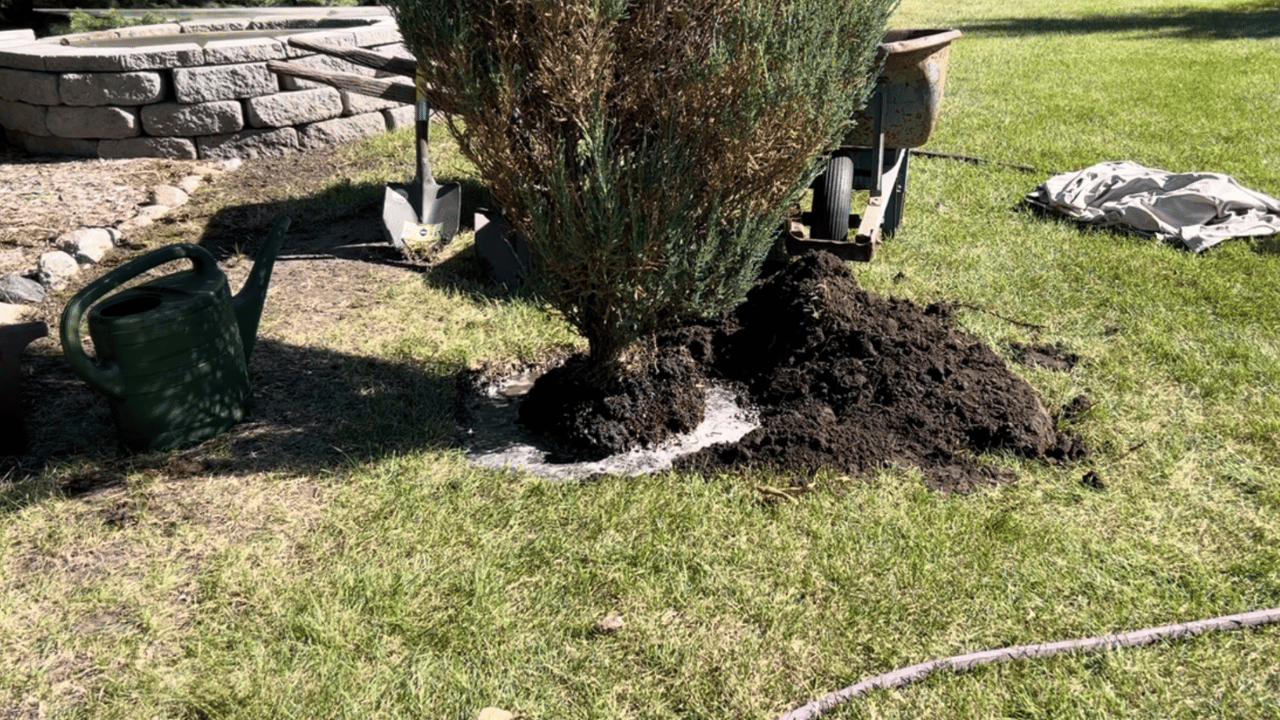
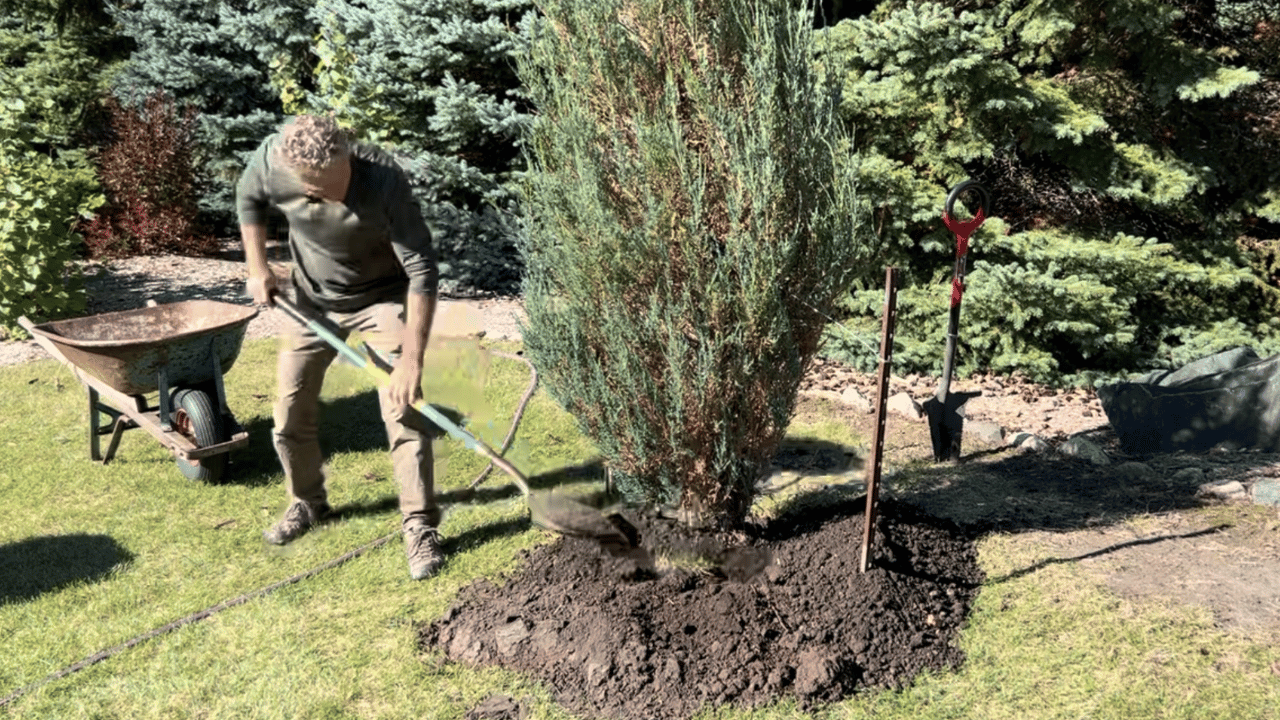
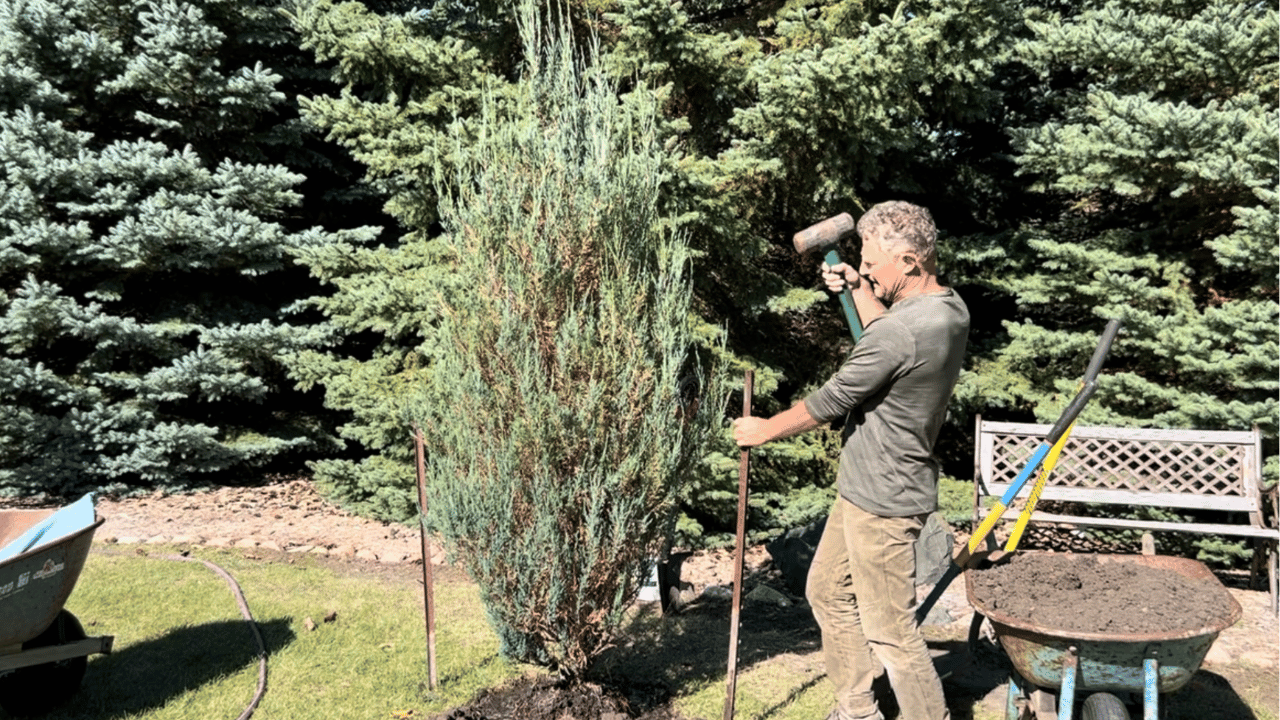
Transplanting A Blue Arrow Juniper
When is the right time of year?
Late fall, after a few hard freezes, or early spring, before your plant breaks dormancy. When the plant is dormant and the weather is cooler, the plant is less likely to experience transplant shock.
Why is watering important?
Not only do you want your plant to be fully hydrated, but adequate moisture in the soil will help keep your rootball intact.
What happens if roots are not severed?
Even a few smaller roots "hanging on" can cause your rootball to break apart as you lift it out of the ground. Work around the root ball with various shovels to ensure you have severed all roots.
How can I keep the rootball intact?
Depending on the size of your plant, you may need to have more than one person help lift the rootball out of the ground. You can also work burlap under the root ball to keep the roots' integrity intact.
How long can the roots be exposed to the sun?
Sun can dry out and cause damage to roots quickly, even in a few minutes. I like to have my hole prepared in advance and a covering available to protect the root system as I transfer the plant toward its new location.
What are the most important plant requirements?
All plant varieties have different requirements for the best long-term health and survival. The main conditions to research and pay attention to are sun or shade, wet or dry, and type of soil preferences. Please pay attention to preferred needs, but recognize that many plants will tolerate conditions outside ideal.
What type of soil and fertilizer should I use?
I recommend using your existing soil for backfilling whenever possible. I usually do not recommend adding soil amendments like peat moss unless you have difficult soil, like large clay chunks. Your plant will eventually have to live outside the small hole you created and in the surrounding soil. So unless you have ground you cannot work with, use your existing soil whenever possible. I use Osmocote on almost everything I plant. It is an excellent slow-release fertilizer with a good balance of macro and micronutrients. Water your plant thoroughly when you have finished backfilling.
Are tree supports necessary, and should I mulch?
Tree supports will help keep your plants in place from wind shifts, which will help your new roots establish quickly. Add 2-3 inches of wood mulch to help keep the moisture at an even level.
While this post is a summary, and many other variables will exist depending on your situation, these steps will increase your odds of a successful transplant. For an expanded discussion on moving trees and shrubs check out this article from PennState Extension.
Our video below shows the transplanting process from start to finish. You can check out additional juniper related videos from Garden Hike here and here.
Thanks for stopping by Garden Hike!
Kevin
Garden Hike is supported by its audience. When you purchase through links on this site, we may earn a small commission at no additional charge to you. Thank you.
Click A.M.Leonard’s banner below to check out their great selection of tools and supplies.

